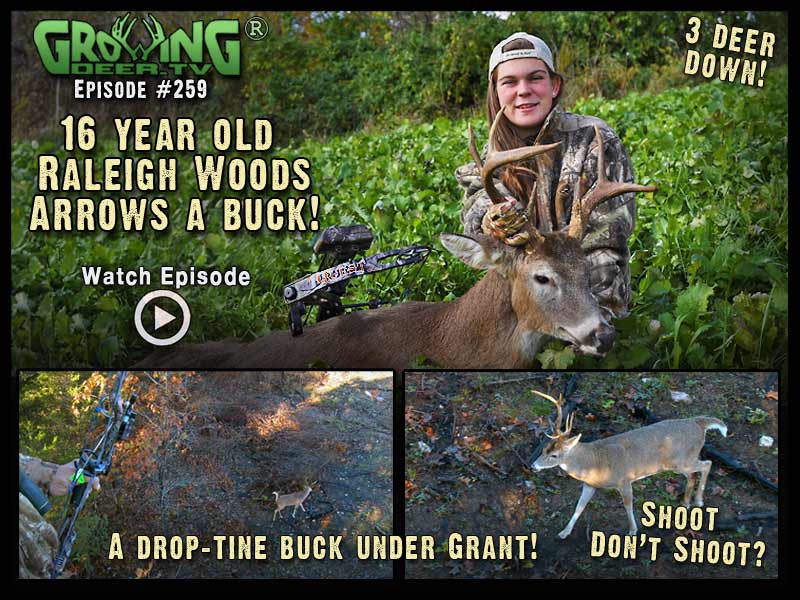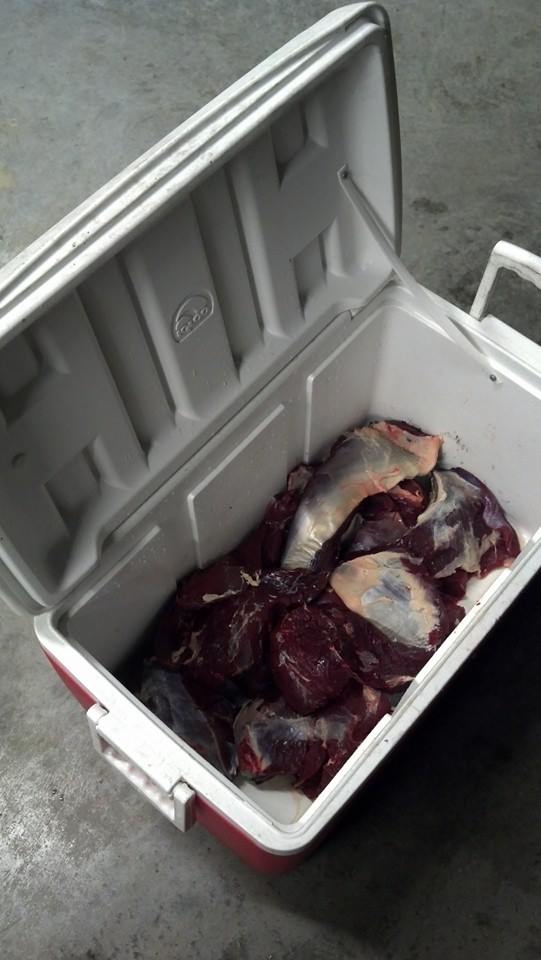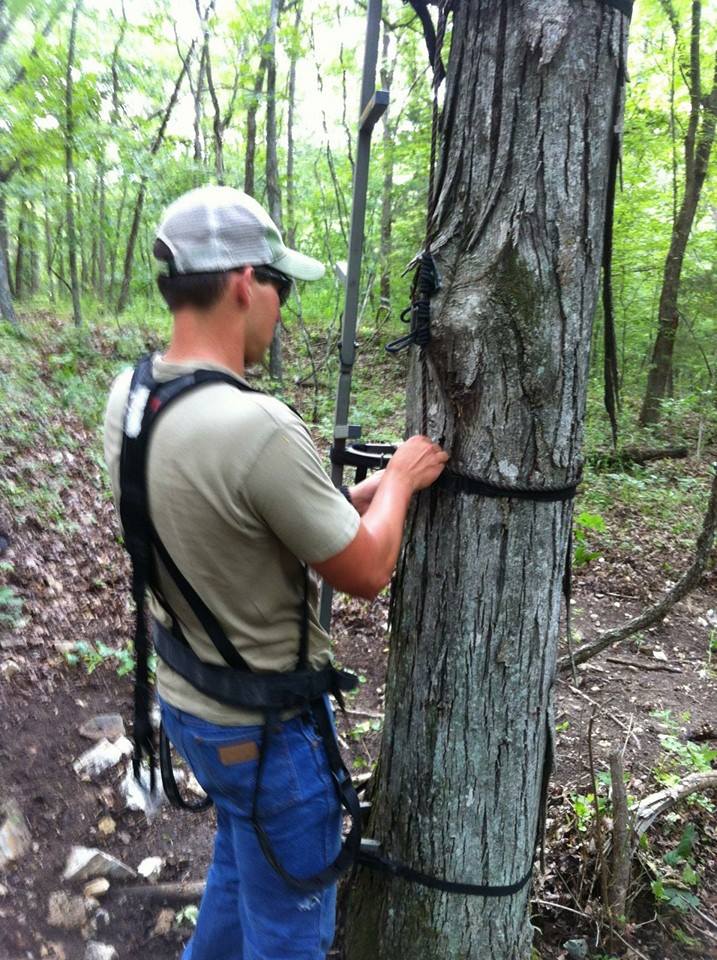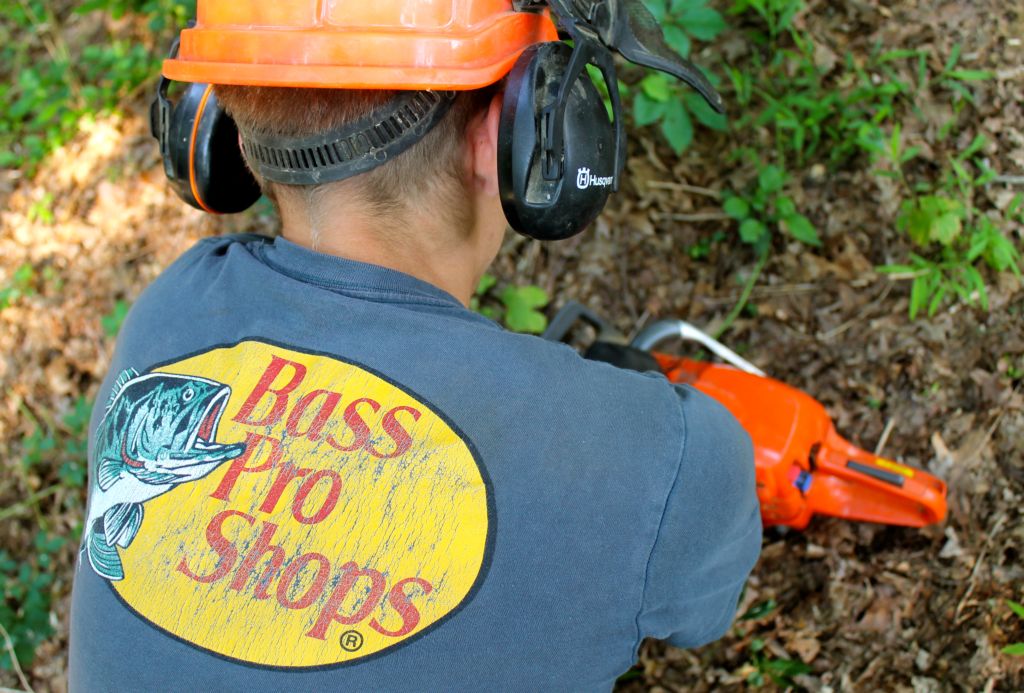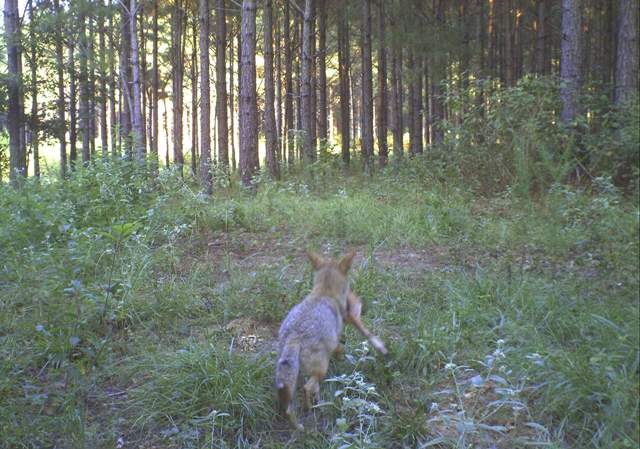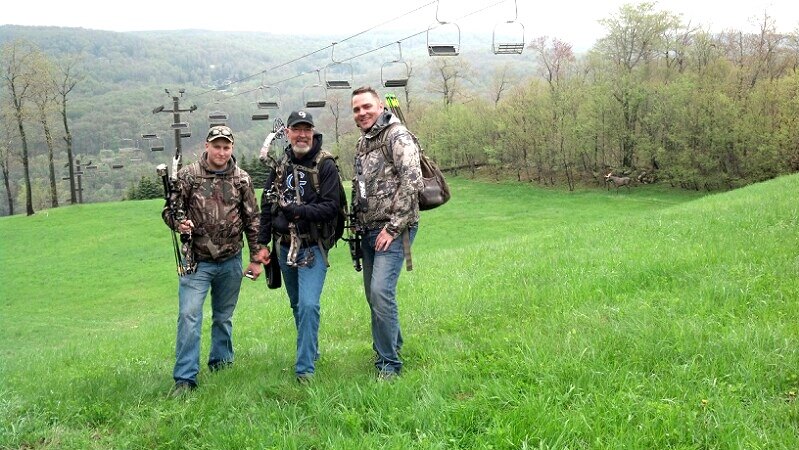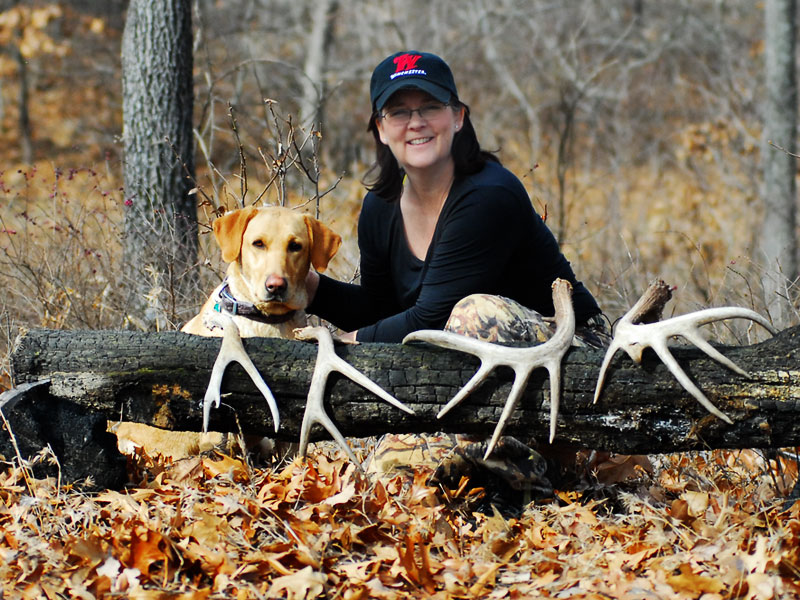Category: Deer Hunting
3 Deer Down! – Episode #259
She’s growing up fast! Raleigh Woods gets her first buck with a bow. She makes a great shot and we have the footage! Plus, Grant and Adam both put more venison on the ground! 3 deer down in this episode.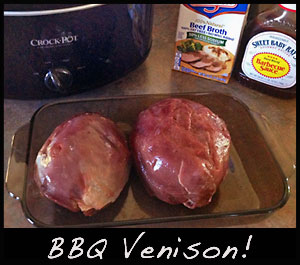
Fan of BBQ Venison?
Click here for an easy 4 ingredient Crock-Pot recipe!
When Acorns Have Gone Bad
White-tailed deer have been eating acorns since both deer and acorns existed. Acorns are a huge amount of a deer’s diet, but there are different variables that can help you determine what type of acorn is the preferred food source. Knowing the time of year, previous rainfall, and daily temperatures can all play into making you a successful hunter this fall.
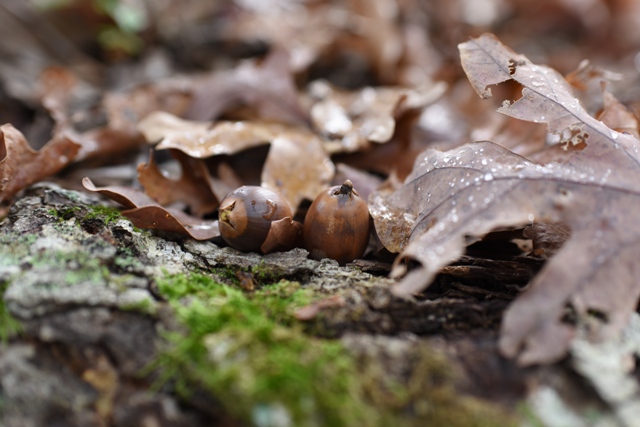
Deer usually do not consume sprouting acorns.
Hunting acorns is a huge part of our hunting strategy here at The Proving Grounds. Grant and I spend a lot of time talking about acorns, scouting for them, observing feeding habits of other animals, and trying to understand the acorn status for our current hunting situation. Late this summer we realized that most of our oak trees had a high amount of acorns. This included both red oaks and white oaks. You can hear Grant discuss the difference in episode #139, Antlers at Dusk. In summary of that episode, we generally hunt white oaks during the early to mid season and focus more on red oaks during the late season. White oak acorns aren’t as “hardy” as red oak acorns, so during years with lots of rain and warmer temperatures acorns that have already fallen tend to start sprouting or spoil. This “spoiling” will cause the deer to stop feeding on them as heavily and the deer will transition to another food source.
What is that other food source? That could be a green food plot, soybeans, a corn field, or another area of acorns. This past week I started noticing a transition of squirrels feeding on typical White Oak acorns to post oak acorns, which are also in the white oak family, but from a different variety of tree. Post oak acorns are generally smaller and harder than a typical White Oak acorn, but the deer still love them. In southern Missouri the post oak acorns tend to fall slightly later than the typical White Oak acorns so we’ll be keeping a close eye on the post oak trees. If post oak acorns become the main food source, it will not only shift our hunting strategy, but also change which areas we hunt the most.
Knowing the preferred food source is critical to hunting success. By finding the main food source, especially this time of year, we find the does, which also means finding those rut-crazed bucks!
Get out this week and enjoy this beautiful time of year!
Daydreaming of Whitetails,
Adam
Scouting For Blind Locations
I really enjoy scouting for locations to put blinds or stands. I like trying to figure out the ever changing puzzle of how deer are using food, cover, and water. In addition, I’m always looking for sign that indicates the habitat quality for deer and other critters. Click HERE to read the full article at Winchester.com.
The Pre Rut
The Pre Rut occurs during late July in south Florida, September in the South Carolina coastal counties, late October/early November during most of the whitetail’s range, and late December in south Texas. No matter when it occurs, where you hunt the pre rut is a great time to deer hunt! Click HERE to read the full article at Winchester.com.
Hunting Strategies: Adjusting Your Game Plan
It’s been a great bow season so far! The GrowingDeer Team has been blessed enough to have harvested several deer already. The weather so far has been fair to poor to say the least. Now is the time to study the available food sources and our game plan. We need to decide if we will continue with our current strategy or adjust for changing food sources.
Most of our hunting so far has been on the edge of green food plots. Over the last week we’ve seen and heard many acorns falling on the ground. After a successful hunt last night, Grant studied the inside of a large does’ stomach to find it packed with acorns. Lesson learned – it’s time to start hunting acorns! If we continue with the approach of hunting food plots, we will soon be frustrated with little deer activity. If we start adjusting our hunting strategies and find the right oak tree we could be in for a very fun hunt!
Recently we were out on the property scouting and we found what looks like a very active oak tree. This specific tree, a Chinkapin oak, is in the white oak family and produces an acorn a little smaller than your typical white oak, but this nut is still a favorite to the deer. Once we took a few more minutes to look under the tree we knew deer were feeding on the fallen acorns. After studying the area we decided our best option was to use a Redneck Bale blind tucked away in the brush about 25 yards from the tree. We are excited to get back in the area and climb into the bale blind for the first hunt!
Get outside and scout those food sources! You may need to change your strategy to make sure you’re not missing out on any dynamite hunting locations.
Daydreaming of whitetails,
Adam
How To Hunt A New Property
Obtaining a new piece of hunting land can be one of the most exciting things for a hunter! There can be something said about hunting a new area with new bucks, new stands, and an entirely new look, but there is also a great deal of concern that goes with this.
Starting with a clean slate can be an awesome experience for any hunter, but the first time you step on that property it can be exciting and downright overwhelming. You are probably thinking “Where do I even begin? I have no idea where or what the deer are doing.” This is one of the most important times for that property. By choosing to be aggressive you can alter the travel patterns and the very demeanor of the deer.
That’s why when I start out on a fresh piece of property I always tread lightly. I never want to begin the search for stand locations by finding the thickest, nastiest area and deciding to hang my stands there. Chances are, that big buck could be living close by and I may bump him out and ruin any chance of killing him that year. When selecting my first few stands to hunt, I usually set up in more of an observation view. I’ll hang back 75 to 200 yards, depending on the terrain and visibility, and observe the deer movements. Once I’ve gotten a good feel for their travel pattern, I’ll find a tree to hang in close to those trails and I’ll move in for the kill.
Another important part of selecting my stand locations is hanging a stand for every wind. I always do this step to ensure I will have a place to hunt no matter what the wind direction is! I made the mistake in my younger days of hanging five stands and all but one could only be hunted on a north wind. Bad move! These days I enter a new property so cautiously that I alert very few deer and ultimately see and harvest more deer.
Daydreaming of whitetails,
Adam
Deer Stand Locations: Ambush Strategies
I recently read a report by the University of Michigan’s Museum of Anthropological Archeology about an interesting find at the bottom of Lake Huron. A research team discovered a network of structures that they suggest are hunting blinds and funneling structures left behind by caribou hunters. Their findings indicate that the ancient hunters had built rock structures to funnel caribou past ambush points.
Reading this struck me in a pretty cool way. Not only had I been working on a new Redneck Blind location that day, but I was also making plans to enhance the natural funnel to that particular blind. Apparently some hunting techniques never go out of style! I observed deer at this location last year and noted that there are two main routes the deer take past the location of that blind. One is at twenty and the other is at sixty yards. By strategically felling a couple of trees on the sixty-yard trail, I hope to increase the percentage of deer that pass the blind on the twenty-yard trail.
I always try to learn from observations and often move stands according to patterns I observe. However, there are some situations when it is easier to bring the deer closer to me, than it is for me to sit closer to them; this is where the chainsaw comes in. By felling or hinge cutting trees in a way that persuades deer to move around them, I have enhanced many stand locations. Deer often choose the path of least resistance and I prefer that path to be in prime range of my bow.
The next time you are in the stand, remember it is important to record deer encounters while hunting. That information can be very useful in developing your own ambush strategies for use in future hunts!
Happy trails,
Hunter
Protecting Fawns For The Future
Like most hunters, this is the time of year that I get really excited to see velvet antlers. I get just as excited when I see a flock of turkey poults or twin fawns! On these hot summer days seeing the next generation of wildlife, or more importantly – when I don’t see them, my thoughts turn to predators. It’s a good time to consider how beneficial my past trapping/hunting efforts have been and how I can improve on those efforts in the years to come. Are my techniques and timing helping the survival of deer and turkeys as I think they should?
Balancing predator populations can be an important part of any deer or turkey management plan. As it should, the subject has gotten a lot of attention over the last few years (watch episodes 122 & 220) by the hunting and science communities. It is important for hunters and land managers to note that the timing of predator removal is a critical component of predator removal.
Spotted fawns and turkey eggs and poults are most vulnerable to predation. The removal of predators during the spring and summer months is a critical component of predator control.
At first glance this may seem simple; however, the difficult part of the equation is that in many states, trapping season is restricted to fall and winter months. In my home state of Michigan it is only legal to trap coyotes from October 15th to March 1st. In contrast, our neighbors to the south in Ohio have no closed season on coyotes, allowing trap lines to be out through the critical time of the fawning and nesting seasons.
Check your local regulations and see if there are any summer predator seasons. Whether it’s the challenge of predator calling or you setting a Duke trap line, consider putting in a little extra time during those crucial months when the next generation of game species is most vulnerable to predation.
Happy trails (and full trap lines),
Hunter
Bow Hunting: Perfect Practice Makes Perfect
Turkey season has closed in several states across the nation. What’s next for the GrowingDeer team? We’ve got a busy summer planned with lots of management projects! We’ll focus our time on our food plots both new and old, tree stand preparation, and most importantly, prescribed fire. With all the summer projects planned there is one activity that can’t be overlooked. It’s very important for each of us that participate in bow season to practice shooting throughout the year and not just the few weeks before season opens.
Now let me define “practice.” Some hunters will practice this off season competing in 3-D tournaments. Others will head indoors for archery tournaments where they practice shooting targets with an “X” on a piece of paper. These are great ways to get you ready for the upcoming archery season but it’s even more important to do “perfect practice.” Perfect practice isn’t the act of shooting your bow over and over at one target and saying you’re ready for season. Perfect practice is getting as close to a real hunting setting as possible. If you hunt in a hat, you shoot in a hat. If you wear binoculars around your neck while hunting, you practice with binoculars around your neck. If you hunt from ground blinds, you practice from ground blinds. These are only a few different examples of perfect practice but all practice should be done with the same equipment that you’ll use hunting and the same mechanics. Same anchor points, same way gripping your bow, same body position, same focus. When we practice, we’re trying to imitate what we’ll be doing this fall when we’re hunting, so we’re getting as close to that as we can when we practice.
Another way of improving our practice and ultimately our shooting ability is practicing from farther distances. Those of you that have shot at long distances like 80 and 90 yards know how incredibly easy it seems when stepping in to real hunting distances of 20 and 30 yards. Unfortunately not everyone can shoot at these distances in their yard. To solve that problem Grant and I recently returned from Seven Springs Resort in Pennsylvania where the Prime Total Archery Challenge was held. This archery Challenge is not for the faint of heart but it’s very close to real world hunting settings. There are several courses with over twenty targets on each course from distances of ten to over 90 yards! All of these targets are in different locations with different angles and slopes. Practicing in conditions like this will unquestionably make you a better shot and inevitably a more successful hunter!
For more information on the Total Archery Challenge go to http://totalarcherychallenge.com/.
Hopefully the weather isn’t too hot where you live this week and you get a chance to practice for the upcoming deer season! It’s only a few months away!
Daydreaming of giant whitetails,
Adam
Hunting Whitetails: Finish Strong
Here in Missouri we have a five more days left of bow season! It’s been cold and snowy so our hunting strategy will be to continue to focus on hunting food sources. There are still a few hit list bucks holding their head gear and we would love to pull back and let an arrow fly on one before the end of the season! These last days of bow season are also a great opportunity to harvest a few more does. We are always striving to balance our herd so taking a few more food plot munchers would be a blessing.
In many states deer season has closed and it’s time to transition into shed hunting. To some it may not be as exciting as tagging that buck you have been chasing but it’s still an opportunity to get your hands on some antlers and enjoy Creation!
We have viewed several Reconyx images of bucks that have dropped their antlers. Miss Tracy and her shed dog, Crystal, will be out searching the Ozark hills soon!
If your state has already closed for this deer season, I hope that it was a great year and good luck chasing sheds. If you are trying to make the most of the last few days of open season, then be sure to clearly identify your target. Don’t make the mistake of shooting a shed buck that you thought was a doe. That is never a good feeling!
Chasing whitetails together,
Brian



